
Early Jottings of the Upper Page and Isis River Districts

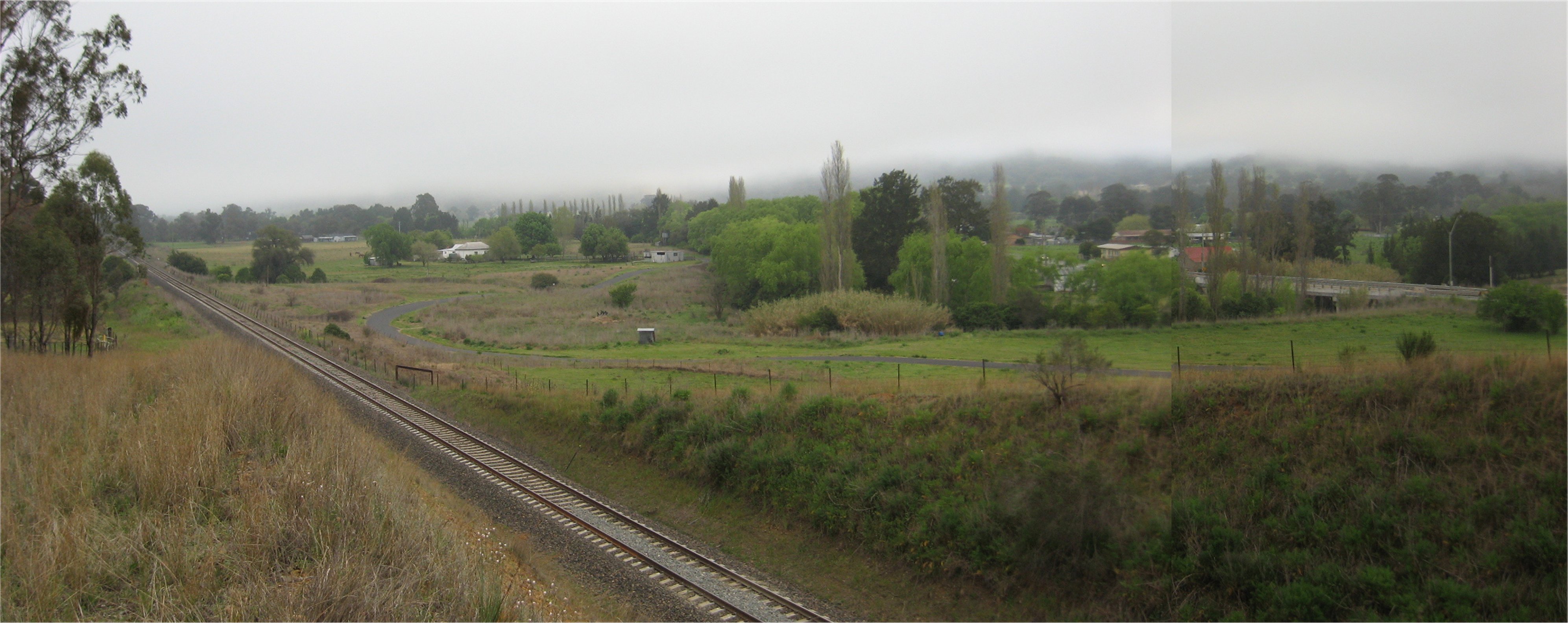
W. H. Warland returned from England in 1839, bringing a nephew from England with him.
Warland’s nephew started a flour mill in Blandford, near where the Catholic Church was later built but for some reason, it did not last long.
The Warlands did not stay much longer in the colony, Warland left his name on Warlands Creek, Warland's Range and the mountain called Warlands Barn. Before leaving Warland sold his lands to F. White.
In 1854, Warland cut up blocks of land around Blandford. 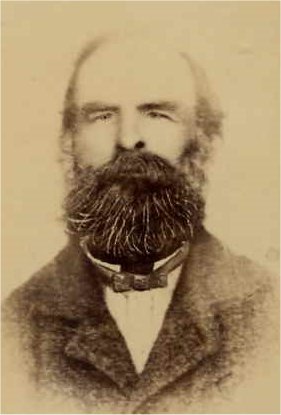 One was bought by Mr Phillip Hartman (right) for a vineyard on Warlands Creek and another Mr Hartman bought land also for a vineyard on the road to where Peter Clark's monument is. One brother was a much better wine grower than the other. Mrs Bill Hartman is 100 years old and now lives in the Murrurundi Hospital (she died five years later). She has only one son, a bachelor.
One was bought by Mr Phillip Hartman (right) for a vineyard on Warlands Creek and another Mr Hartman bought land also for a vineyard on the road to where Peter Clark's monument is. One brother was a much better wine grower than the other. Mrs Bill Hartman is 100 years old and now lives in the Murrurundi Hospital (she died five years later). She has only one son, a bachelor.
Others who bought land in Blandford were Greers, Norvills, Orams, Wildes, Claus, Partridges, Swansons, Schuemakers, Margans and Frank Fleming.
Thomas and Jesse Avard, who had been tenant farmers on Bloomfield, bought their own farms. Avard descendants are still in Blandford. Harry Avard married a Benham.
Robert Greer had his own home in Blandford. He was a school master for a good many years, with his home right opposite the school. It later fell into disrepair and was pulled down years ago.
Oram (Snowy) was the postmaster and drove to the railway station twice a day to collect and send mail.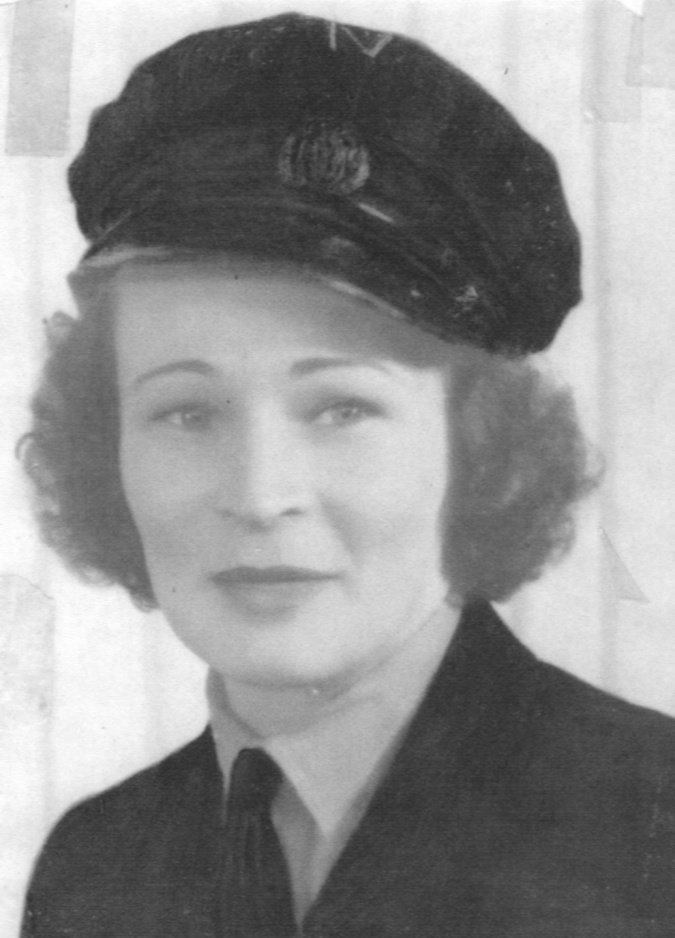
The Schuemakers were a big family (left is Melba Schuemaker). They built a nice home and had a fine vineyard. The sons were William, Anton, Phillip and Jo. William joined the railways and, on retirement as station master at Miandetta, returned to Blandford and built a stone house on the site of the original home. However, he didn't do a marvellous job and it fell down in a few years. Jo was a shearer and had twelve children, while Phillip was a bush worker and Anton worked for the Warrah Shire.
Three Schuemakers worked with Charlie Haydon in his carrying business; these were Jim (Phillip's son), Reggie and Ron (sons of Jo). Ron was killed in the War. Some of the people on selection of land, particularly on Warlands Creek, established homes in Blandford and camped during the week and came home for weekends. Education was a problem for the children.
Jesse and Thomas Avard had been tenant farmers on Bloomfield.
Swanson was a Swede and came to Blandford as a navvie on the railway work gang. The Wilde family is an interesting story. Abraham Wilde was a soldier in the Peninsula under Lt Colonel Dumaresq. One day in Sydney, Durnaresq recognised his old soldier who had migrated to New South Wales after the War. He had joined the New South Wales Police Force, but he had sustained an injury making him unfit for police work. Dumaresq gave him a job he could cope with at St Helius. When Lt Colonel Dumaresq died, St Helius was sold and Abraham found his way to Blandford. Later, his son, also Abraham, was speared by the blacks out at the Gulf Country in Queensland, along with two other men, one of whom died.
This Abe had two sons, Abe and Robert. Robert was a carpenter and Abe a bush worker. The only Wilde descendant now living in the area is Hazel Schuemaker. Bickham and Harben Vale were both so close to Blandford that the families lived in the village.
The Perkins are another very old family. They had First Fleeters in the family and their story has been documented by Anne Smith and is titled Children of the Page.
Mullins had a selection on Warlands Creek opposite Barsham, then Cady's. He grew corn for the Sydney race horses. It is now the centre of Blandford Park Stud. Next on the way was Snapes, later the home of Harry Hibbs. Next Johnny Hannaford, who lived with his old sister ~ she was a real personality. She had a lot of religious artefacts that she always brought to church for Christmas. The Easter one was a crown of thorns.
Next was Eidsteins dairy. Mrs Eidsieins was an excellent needle woman and went around the homes sewing for people. She made my father, F. B. Haydon's christening gown which is now 107 years old and still in good condition It was used recently for Sam, Jim Haydon's baby.
There was a hotel called The Red Lion
at the crossing where the Benham Bridge is today. Quite a few different proprietors held it over the years A Perkins relative had it when the bushranger Wilson stayed there the night before he shot Peter Clarke on Warland Range.
The first person to take up Pentlands was Dr Thompson, an ex-naval surgeon. The first home was right on the creek in a direct line from the house. There are still trees there that blossom every spring. Dr Thompson called the range of hills leading into Murrurundi, the Pentland Hills. In 1848, Dr Thompson decided to pull out and return to England and then the Benham family became the owners They were wonderful farmers and could grow anything.
They had started out with a fruit and vegetable shop in Haydonton and no doubt had a plot of ground to grow for the shop. There were a few farms on Campbells Creek, including one Thomas Danswan, a Chinaman. He married one of the Gimberts.
The Greers had built the Plough Inn at Blandford. Though they owned the building, they never ran it themselves. As for licensees, I remember Tom Callinan running it before he went to the White Hart, then Owen Hunt for a great number of years.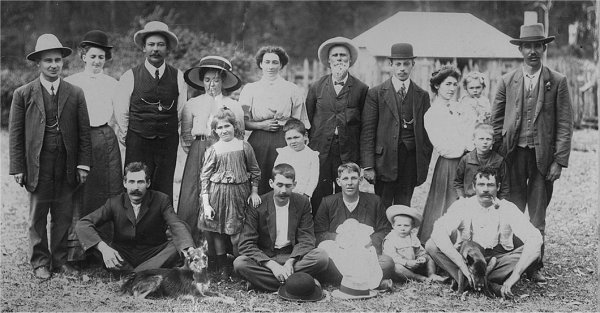
The Norvils (above) were butchers, as well as owning land on Warlands Creek. When the railway was being built, there were a lot of navvies camped in Blandford. The Bloomfield Station records recall bullocks sold to Norvils for navvies. This was a pretty handy regular income while it lasted. Later, Harry Norvil took his butchering business to Murrurundi and was a very successful man, building a very nice home near Paradise Park. Mrs Harry Norvil was a Fishburn and her forebears came to Australia on the First Fleet. On the south side of Page River there were four houses. One was Mrs Dougherty who was William Greer's mother who married again after her husband Greer died.
Next to the cottage was Mrs Gorman. No-one seems to know much about her, other than the fact that she had been Max Wright's nurse and the Bickham people kept an eye on her to make sure she had everything she needed.
Just across the road on the river was galvanised iron house owned by a dark woman called Sally Simpson. She had one daughter, Josie, who married Mr Milgate. That house has gone now and I think Sally was a midwife.
Minnie Stewart lived on the flat at Blandford too. When her house got very unsafe, her brothers built her a little house right in Blandford. Addie Blayden lives in a nice house where Minnie's used to be on the hill over the river. Others included the Margans and Hartmans, Abe Wilde, Anton Schuemaker and the village's funny man, Jack Fleming. He was a plumber and general 'fix it' man. He had a pile of bits and pieces of tin and wire etc. and it was amazing what he could produce. He had very poor eyesight and squinted at you.
The Norvils moved to settle in Blandford. One married Milton Stewart who was the chauffeur for the Whites at Harben Vale. The sister married Ernest Stewart who was a drover. They both had nice homes in Blandford. .
There was, of course, no occupation for the girls except in the bigger houses about. I remember Baker, Blayden, Adams, Mullins, Cady, Partridge and Schuemaker girls all being at Bloomfield. They had their own sitting room and were provided with a horse and sulky for their days out. The Irish settlers, who were in the majority, loved their race meetings and they were held fairly frequently in the vicinity of the Plough Inn. They were mostly bridle races with the prize being a bridle. The boys were very young when they first began to ride in the races. My father, F. B. Haydon, was eight years old when he won his first race at Blandford.
About two miles south of the Blandford Railway Station is the property called Bickham. It was taken up first by J. I. Cory who leased it out to John Maunder Gill. Then it was bought by P. W. Wright. The Wrights had been for some years running the Aberdeen Hotel and flour mill to which Murrurundi residents took their grain to be crushed.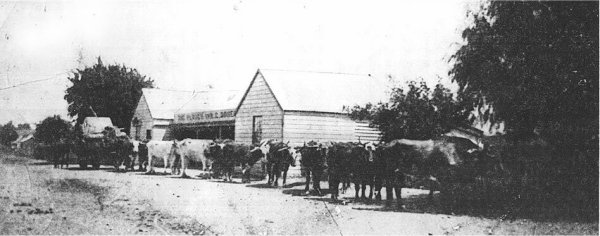
The Plough Inn (above) was the centre of the district activities for many of the pioneers of this area. Many a tale has been retold after the annual Boxing Day race meetings in the adjacent paddock.
Back to the contents